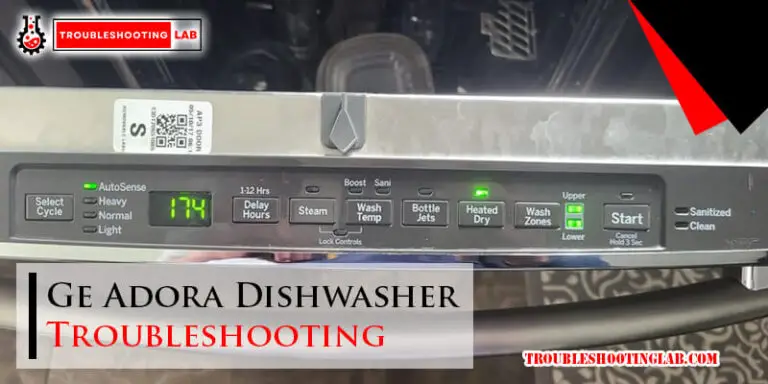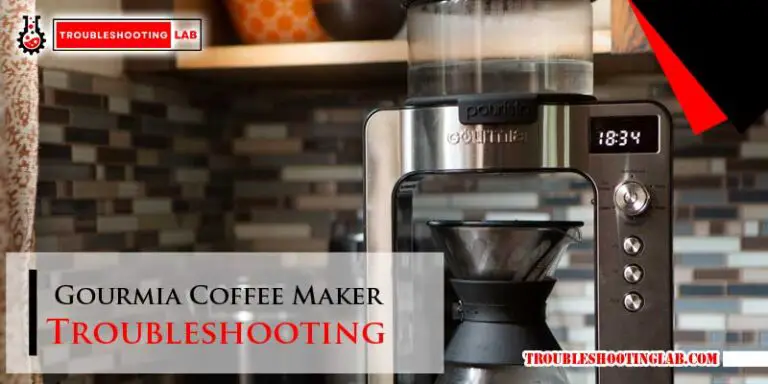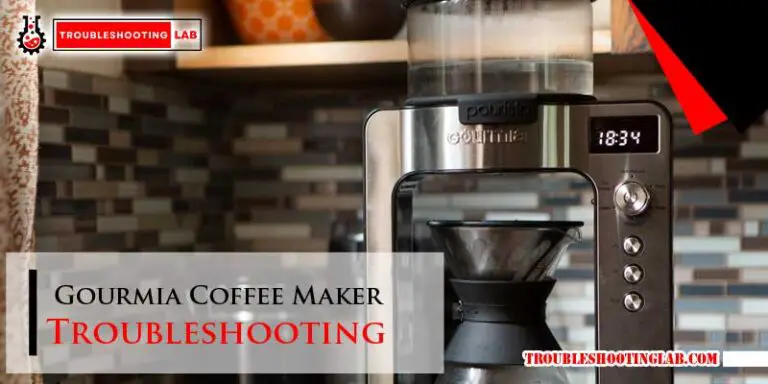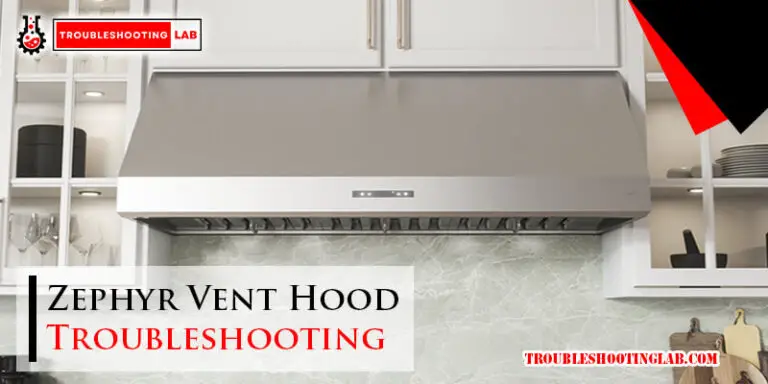Crosley Refrigerator Troubleshooting: Quick Fixes
For Crosley refrigerator troubleshooting, check power supply, temperature settings, and clean condenser coils. Ensure door seals are intact and not damaged.Crosley refrigerators are known for their reliability and efficiency, but occasional issues may arise. Common problems include improper cooling, unusual noises, or water leakage. Addressing these issues promptly can prevent more significant problems and extend the lifespan of the appliance.
Start by verifying the power supply and adjusting the temperature settings to optimal levels. Regular maintenance, like cleaning the condenser coils, can improve performance. Make sure the door seals are clean and undamaged to maintain proper airflow and cooling. Proper troubleshooting can save time and money by avoiding unnecessary service calls.
Refrigerator Not Cooling
Is your Crosley refrigerator not cooling? This can be a major problem.
Food might spoil quickly. You need a solution fast. Below are steps to troubleshoot this issue.
Check The Power Supply
The first step is to check the power supply. Make sure the refrigerator is plugged in.
Check if the power cord is in good condition. Look for any signs of damage.
If the power cord looks fine, test the outlet. Plug in another device to see if it works.
If the other device doesn’t work, the outlet may be the problem.
Inspect The Thermostat
Next, inspect the thermostat. The thermostat controls the cooling.
Set it to a colder setting and wait a few hours.
If the temperature doesn’t drop, the thermostat might be faulty.
Use a multimeter to check the thermostat.
If it shows no continuity, replace it.
Strange Noises
Is your Crosley refrigerator making strange noises? This can be annoying and worrisome. Understanding these sounds can help you troubleshoot the problem. Let’s break down the common sources of these noises and how to fix them.
Identify The Source
Before diving into repairs, identify where the noise is coming from. Follow these steps:
- Open the refrigerator door.
- Listen carefully to locate the noise.
- Check the back, bottom, and inside of the fridge.
Identifying the source is crucial for effective troubleshooting.
Fan And Compressor Issues
Fans and compressors are common sources of strange noises. These components work hard to keep your fridge cool. Let’s examine each one.
Fan Issues
The fan inside your fridge can make humming or buzzing sounds. Here’s how to check it:
- Unplug the fridge for safety.
- Locate the fan at the back.
- Inspect the fan blades for dirt or debris.
- Clean the blades if necessary.
Compressor Issues
The compressor is often located at the back, near the bottom. Compressor noises can be louder and more concerning. Follow these steps:
- Unplug the refrigerator.
- Find the compressor at the back.
- Check for any loose parts or connections.
- Ensure the compressor is securely mounted.
If the compressor noise persists, consider contacting a professional.
Note: Always ensure the refrigerator is unplugged before inspecting or cleaning any components.
Water Leakage
Experiencing water leakage from your Crosley refrigerator can be frustrating. Water leaks can stem from several sources. Addressing these issues early can prevent damage. This section will guide you through common causes of water leakage. Follow these steps to troubleshoot and fix the problem.
Examine The Drain Pan
The drain pan collects water from the defrost cycle. Over time, it can overflow or crack. Follow these steps to examine the drain pan:
- Locate the drain pan at the bottom of the refrigerator.
- Carefully slide it out and inspect for cracks or damage.
- If cracked, replace the drain pan immediately.
- Ensure the pan is properly seated to avoid future leaks.
Inspect The Water Line
The water line supplies water to the ice maker and water dispenser. Leaks often occur in the connections or tubing. Follow these steps to inspect the water line:
- Turn off the water supply to the refrigerator.
- Check all water line connections for tightness.
- Look for any visible cracks or holes in the tubing.
- If damaged, replace the water line immediately.
- Turn the water supply back on and check for leaks.
Proper maintenance of these components can prevent water leakage. Regular checks ensure your Crosley refrigerator functions smoothly.
Ice Maker Problems
Ice makers are convenient but can have issues. Whether it’s no ice, low ice, or strange-tasting ice, troubleshooting can help. This guide will walk you through common problems and how to fix them.
Check The Water Supply
First, ensure the water supply is working. A blocked or kinked water line can cause problems.
| Step | Action |
|---|---|
| 1 | Locate the water supply line behind the refrigerator. |
| 2 | Check for kinks or clogs in the line. |
| 3 | Ensure the valve is open and water flows freely. |
Inspect The Ice Maker Assembly
Next, inspect the ice maker assembly. This includes the ice tray, motor, and other parts.
- Ice Tray: Check for any ice build-up or blockages.
- Motor: Listen for any unusual noises.
- Connections: Ensure all electrical connections are secure.
Use a multimeter to test the motor if needed. Replace faulty parts to fix the issue.
Other Common Issues
Here are some other common ice maker problems:
- Temperature: Ensure the freezer is cold enough.
- Filter: Replace the water filter if clogged.
- Sensors: Check for faulty ice level sensors.
Frost Build-up
Frost build-up in your Crosley refrigerator can cause various issues. This can affect the efficiency and performance of your appliance. Here are some tips to help you troubleshoot and solve this problem.
Defrost The Freezer
If you notice frost build-up, it’s time to defrost the freezer. Follow these steps:
- Turn off the refrigerator.
- Remove all the food items.
- Leave the freezer door open.
- Place towels to absorb melted water.
- Wait for the frost to melt completely.
Once the frost is gone, clean the interior. Use a mild cleaner and a soft cloth. Turn the refrigerator back on and replace the food items.
Check The Door Seals
Faulty door seals can cause frost build-up. Inspect the seals for any gaps or cracks. Follow these steps to check the door seals:
- Close the door on a piece of paper.
- Try to pull the paper out.
- If the paper slides out easily, the seal is faulty.
If the seals are damaged, replace them. Proper seals ensure the freezer stays airtight. This helps prevent frost build-up. Keep your Crosley refrigerator running efficiently.
Refrigerator Runs Constantly
Is your Crosley refrigerator running constantly? This can lead to high energy bills. It may also cause wear and tear on your appliance. Fixing this issue can save you money and extend the life of your refrigerator. Here are some troubleshooting steps you can follow.
Clean The Condenser Coils
Dirty condenser coils can make your refrigerator run non-stop. These coils release heat from the fridge. If they are dirty, they cannot work well.
To clean them, follow these steps:
- Unplug the refrigerator from the power outlet.
- Locate the condenser coils. They are usually at the back or bottom.
- Use a vacuum cleaner to remove dust and dirt.
- Wipe the coils with a damp cloth if needed.
- Plug the refrigerator back in and check if it runs less.
Check The Temperature Settings
Incorrect temperature settings can also cause constant running. Set the fridge temperature between 37°F and 40°F. The freezer should be at 0°F.
Follow these steps to check and adjust the settings:
- Locate the temperature control dial or digital display.
- Adjust the settings to the recommended levels.
- Wait 24 hours for the temperature to stabilize.
- Check if the refrigerator runs less frequently.
If the refrigerator still runs constantly, you may need professional help. Check the user manual for more troubleshooting tips.
Door Seal Issues
Door seal issues can cause your Crosley refrigerator to lose cool air. This can make your food spoil quickly. Fixing the door seal can save you money and keep your food fresh.
Inspect The Gasket
Start by inspecting the gasket. The gasket is the rubber seal around the door.
Look for cracks, tears, or dirt. These can stop the door from sealing properly.
- Check for any gaps or breaks.
- Feel for cold air escaping.
- Use a flashlight to look for light passing through.
Clean the gasket with warm water and mild soap. This removes any dirt or grime.
Let the gasket dry completely. Check if the door closes tightly.
Replace The Seal
If cleaning does not fix the issue, you may need to replace the seal.
Purchase a new gasket that fits your Crosley refrigerator model. You can find this information in the user manual.
- Remove the old gasket. Start at one corner and pull it off.
- Install the new gasket. Press it firmly into the groove.
- Ensure the new gasket is even and smooth.
Check the door again. Make sure it closes snugly. If it does, your problem is solved!
Frequently Asked Questions
Why Is My Crosley Fridge Not Cooling?
Your Crosley fridge may not cool due to a faulty thermostat, dirty condenser coils, or a malfunctioning compressor. Check these components.
How Do You Reset A Refrigerator That Is Not Cooling?
Unplug the refrigerator for 5 minutes. Plug it back in. Set the thermostat to the desired temperature. Check if it cools. If not, consult a technician.
What Is The Most Common Fridge Failure?
The most common fridge failure is a malfunctioning thermostat. This issue causes improper temperature regulation, leading to spoiled food.
Why Won T My Crosley Refrigerator Make Ice?
Your Crosley refrigerator might not make ice due to a clogged water filter, a faulty ice maker, or a broken water inlet valve. Ensure the freezer temperature is set correctly and check for any blockages in the ice maker or water supply line.
Why Is My Crosley Refrigerator Not Cooling?
Your Crosley refrigerator might not be cooling due to a dirty condenser coil or a faulty thermostat.
Conclusion
Troubleshooting your Crosley refrigerator can save time and money. Follow these steps to resolve common issues. Regular maintenance ensures longevity and efficiency. For complex problems, consult a professional technician. Keep your refrigerator running smoothly with these tips. Stay proactive and enjoy the convenience of a well-functioning appliance.





